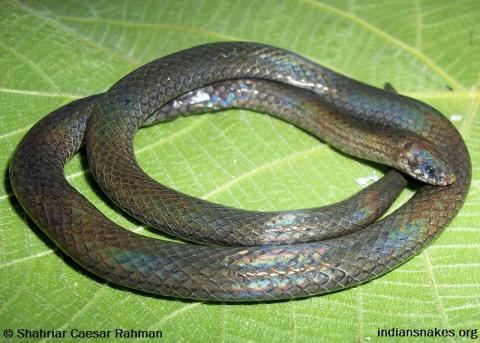Kingdom Animalia Suborder Serpentes Subfamily incertae sedis Scientific name Blythia reticulata Higher classification Blythia Order Scaled reptiles | Subphylum Vertebrata Family Colubridae Genus Blythia
Theobald, 1868 Phylum Chordata Rank Species | |
 | ||
Similar Amphiesmoides ornaticeps, Atretium, Trachischium monticola, Trachischium tenuiceps, Liopeltis frenatus | ||
Blyth's reticulated snake (Blythia reticulata) is a species of colubrid snake endemic to Asia.
Contents
Etymology
The genus Blythia was named after Edward Blyth (1810–1873), curator of the museum of the Asiatic Society of Bengal, by William Theobald in 1868.
Geographic range
B. reticulata is found in India and parts of Southeast Asia.
Description
The rostral scale is about as broad as deep, visible from above; the suture between the internasals is one-half to two-thirds as long as that between the prefrontals; the frontal is longer than its distance from the end of the snout, about two-thirds the length of the parietals. One postocular and one elongated temporal scale are present, with six upper labials, of which the third and fourth enter the eye, the first is smallest, and the sixth largest; the four lower labials are in contact with the anterior chin shields; the posterior chin shields are small. The scales in are 13 rows. Ventral scales are 127-130 in number, and the anal scale is divided. The subcaudals count is 19-29.
This snake is blackish-brown above and below, with the lateral and ventral scales edged with lighter color.
Total length of Blyth's reticulated snake is 16.6 in (420 mm), with a tail 1.65 in (42 mm) long.
Distribution
It is found in India {Khasi Hills (Assam), Arunachal Pradesh}, Myanmar, and China (southeast Tibet).
